We knew it would happen, and sure enough - in early July, the first hurricane of the season hit the Mexican coast. This was the first hurricane since our house was constructed, so we were somewhat nervous of how everything would hold up. Short answer - everything did just fine. Our house, us, and our pets. The post First hurricane in the new house appeared first on TexMexExpats.
We knew it would happen, and sure enough – in early July, the first hurricane of the season, hurricane Beryl hit the Mexican coast. This was the first hurricane since our house was constructed, so we were somewhat nervous of how everything would hold up.
Short answer – everything did just fine. Our house, us, and our pets.
Hurricane Beryl
The storm hit a bit south of us, closer to Tulum. We got heavy winds and rains, but nothing devastating in Puerto Morelos.

Prep

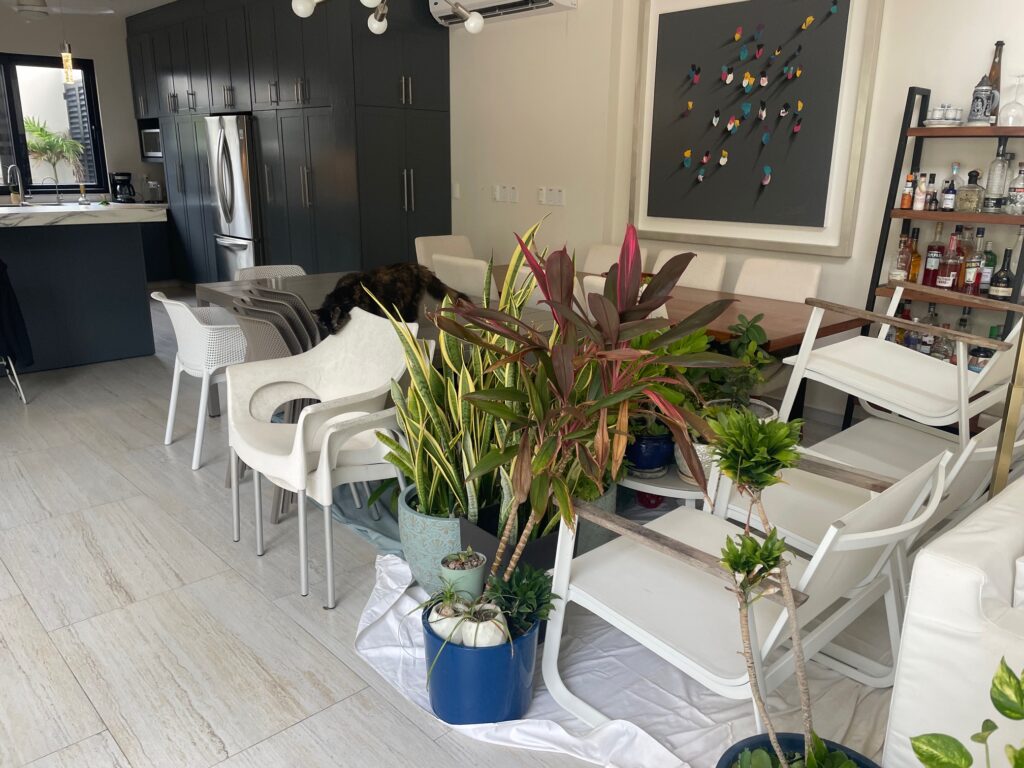
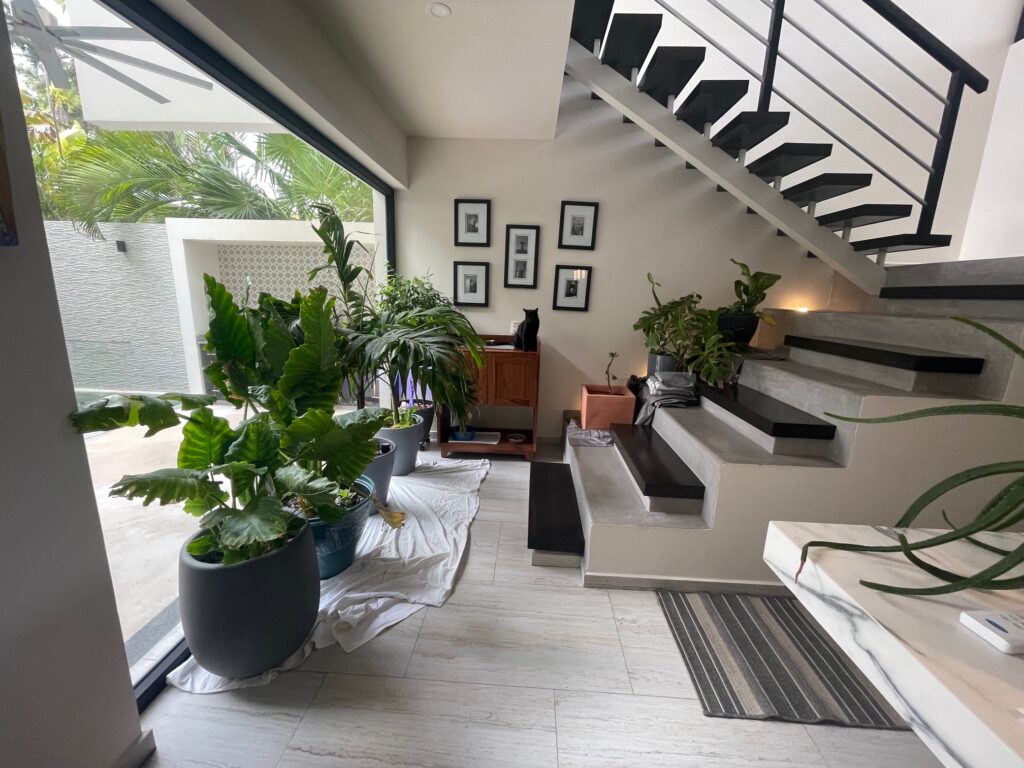

Power Outage
In past years, CFE (the electric company) would shut down power as a storm approached, for safety reasons. This year, they said they would not. Most of our town did not lose power at all. Some of the beach side lost power for a few hours. But we were without power for 2 days – over 50 hours.
UPS
We still have a couple of UPS units (Uninterruptible Power Supplies), so for short power outages, that keeps our internet and network online. That’s good for a couple of hours. Not enough for 50 hours though.
Fire up the generator
We do have a portable generator – a Generac 8000 watt unit. It’s enough to keep the core essentials of the house going (refrigerators, internet, network, some lights, and even one of our AC units). We have 5 mini-split units in the house, and they’re all large. Three are 2-ton units, and two of them are 3-ton units. With the generator, we were able to run one of the 2-ton units (in the master bedroom) just fine.
When we built the house, we built a bodega for the generator, and had the electrician wire it into the house. So we don’t have to run extension cords and plug in devices. We simply flip two different breakers – one to turn off the power coming into the house from CFE, and one to let the generator power flow into the house.
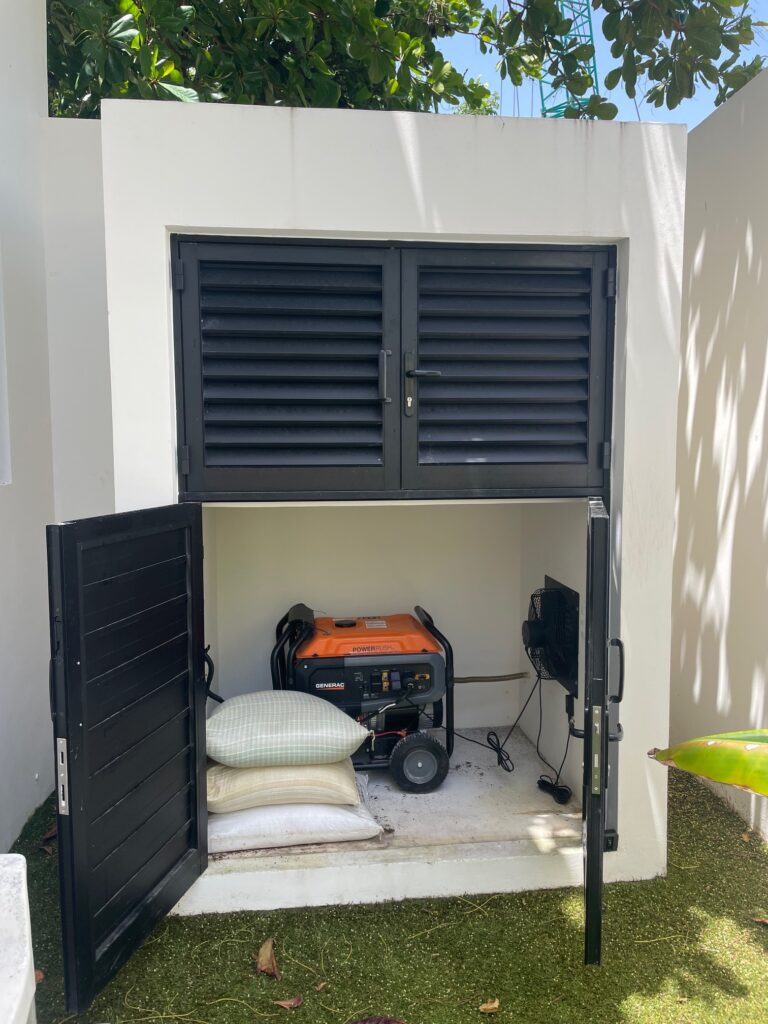
I filled the generator gas tank around 9:00 PM, and that carrier us through the night, with the essentials and the bedroom AC running. Around 7:00 AM, the tank was close to empty.
The generator specs say that it has a 15-hour runtime at 25% load, and a 10-hour runtime at 50% load. But, what I don’t know is how to tell how much power is actually being drawn from the generator. For example, is it running at 50% load? 90% load? 4kW? 7 kW? I just don’t know. I’ll have to do some investigation to figure out the best way to track this.
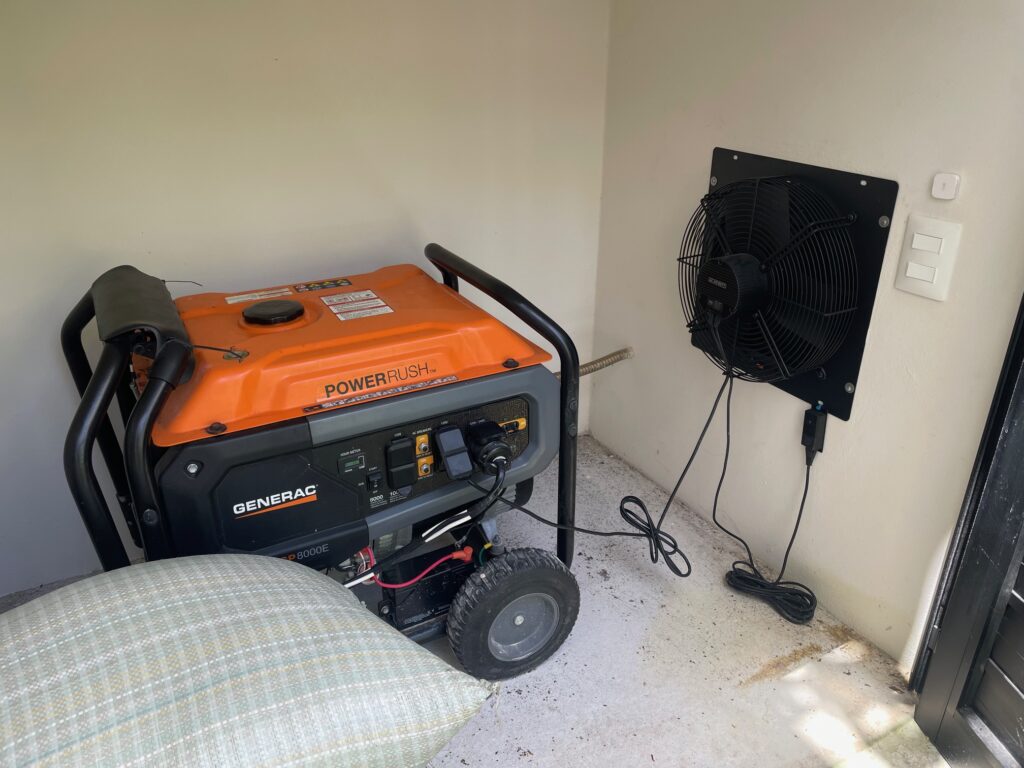
Generator Temp and Noise
One downside of the generator is that it’s LOUD! My intent of having a generator bodega was to be able to close the doors, which should reduce the noise. But, it was getting hot in there – above 130° F, so I was nervous about the generator itself. The bodega has an air intake opening, and an exhaust fan to blow air out. I think I need to revisit the airflow and cooling design. Maybe increase the air intake opening, and/or add an intake fan as well. I ended up leaving the bodega doors open, so the temperature was ok, but it was just loud. I’m sure my neighbors weren’t super pleased (although some of them had their own generators running as well). With the door open, the bodega temp was around 105° F. The graph shows when I fired it up with the doors closed, and then when I opened the doors to cool it down.

Once I get the temperatures under control, I can look at noise reduction. I have a few ideas for that already.
Gas Pump
One of the items that makes refilling the generator MUCH easier is a battery-powered pump (Amazon link). This is so much easier than trying to pour from a gas can into the generartor – especially inside the bodega.

Solar
We do have solar panels on our house, but, if the power from the electric company is out, you can’t actually use the power generated by the solar panels. This is a major bummer. They say that it’s to prevent the solar power from back-feeding into the grid, and potentially electrocuting a line worker who may be working on the grid lines. That seems like it should be a solvable problem to me, but  .
.
The way to make this all work is to have a storage system – i.e. a battery. This is something we’re in-process of looking into.
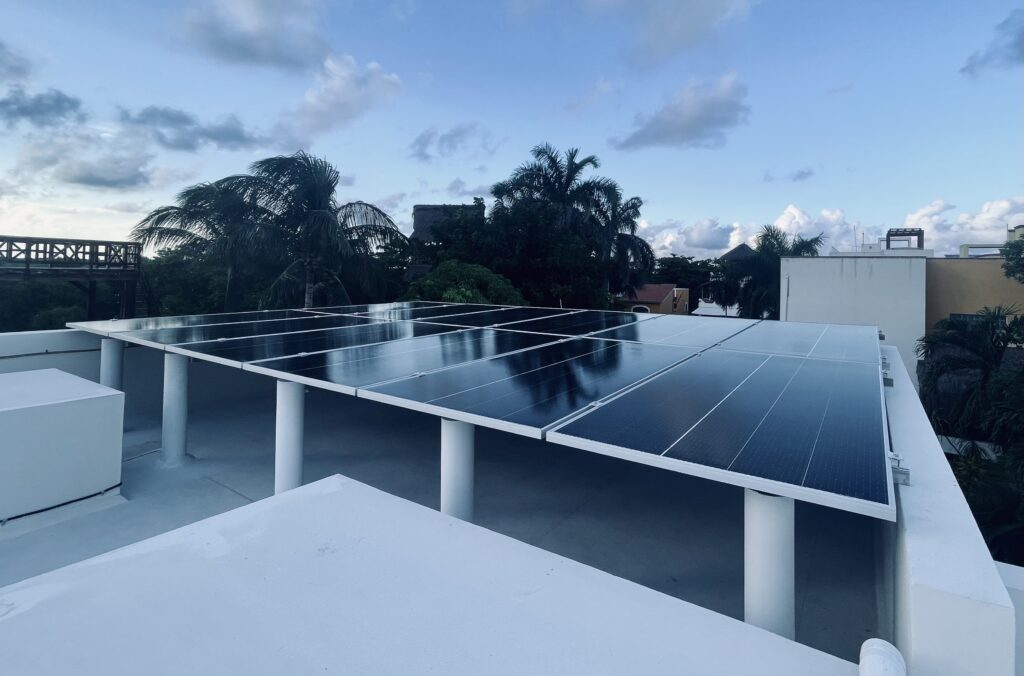
Refrigerator Temperatures
I have sensors in the frig and freezer, which allowed us to be sure things weren’t getting too warm, even when we had the generator off.
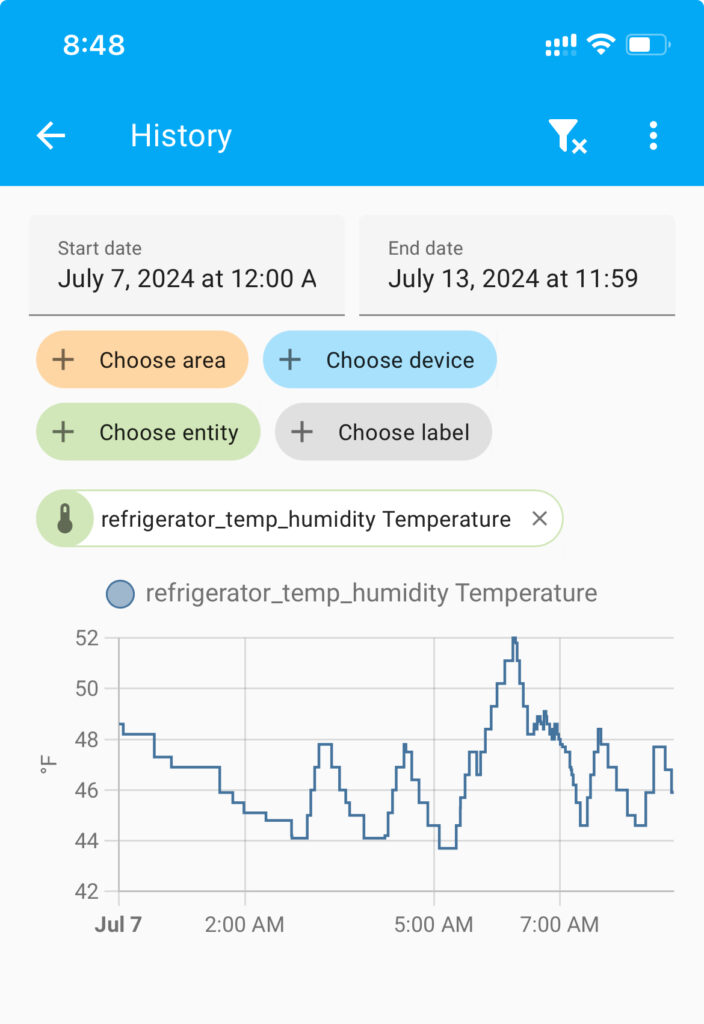
Windows, Doors, and Water Ingress
Our Kommerling windows and doors were great. When the storm was raging (and without the generator going), you could barely hear the storm. The sound reduction of these is pretty amazing.
We did get a bit of water into the house from a couple of the windows – which means we need to re-caulk around the windows. All of those were windows that face East – so they get the brunt of the rain, and sun exposure, which is likely why we need to re-caulk them.
We did get a water into the house from the front door, mainly coming in under the door. We knew this was a potentially problematic area, and this storm proved it. The design and implementation of the weatherproofing of that door is the one flaw in our house build. So we have a contractor coming in soon to help with this.
Telmex and Telcel (Internet & Cell services)
Normally during power outages, the internet is still functional (as long as you have a way to power your internet modem). There was a few hours where both Telmex (internet) and Telcel (cell service) were both completely unavailable. But for the most part, they were fine.
Preparedness
I would like to say my focus on being prepared was due to my years of being a boy scout, but in all honesty, I wasn’t a good scout. The only thing my troop could do was light fires. Big fires. Bonfires. And they were glorious.
Regardless, a few items help during power outages. Even for short ones, where I may not want to fire up the generator.
Rechargeable battery-powered fan – Even a bit of airflow makes a big difference. (Amazon link)

French Press – Coffee is still a necessity. Since our stove and oven are propane powered, they work, even when we don’t have power. So, boil water on the stove, and use the French press to make coffee.

Rechargeable battery packs – almost everyone has these now, which give you multiple full recharges for a phone or tablet.

Rechargeable lights – We have a few different rechargeable lights, and battery flashlights, always charged and ready. They’re also great for dinners outside on the patio.


Wrap Up
Our first hurricane in our new house was mostly uneventful. We learned a few things, and have a few things that can be improved, but overall, it’s all good. We would still rather not have hurricanes at all, but, that’s life in the Caribbean.
The post First hurricane in the new house appeared first on TexMexExpats.





